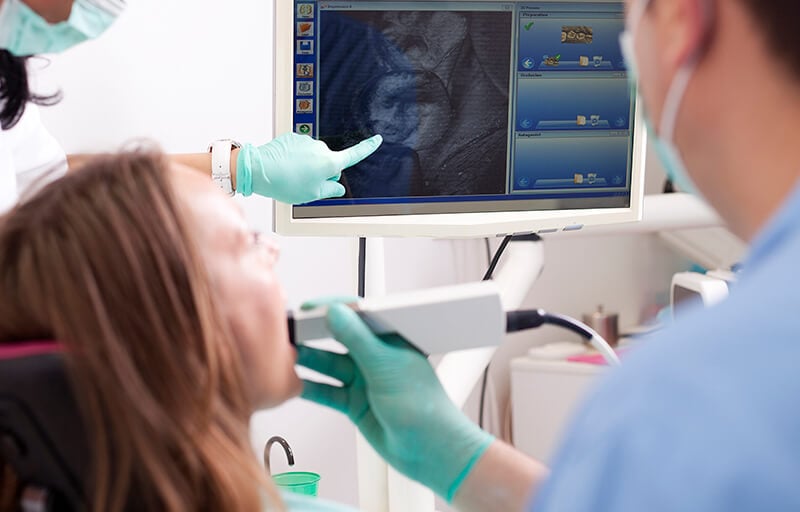That gut-twisting bolt of pain you experience with a toothache is your body’s way of alerting you to a problem. It’s also a reminder that our teeth are alive.
Teeth are born, they grow, they (or, to be more specific, the dentin core of your teeth) have nerves and a blood supply. Each tooth in your mouth is comprised of:
- Enamel: The outer covering of the tooth, and the strongest substance in your body. Enamel is the most visible part of teeth, and is a barrier that protects your teeth from the ravages of acids and plaque. Enamel does not contain any living cells, and cannot regenerate itself, so it’s critical to preserve it. Proper oral hygiene – brushing, flossing, regular professional checkups and cleanings – help to keep your enamel from eroding.
- Dentin: is a layer of living cells that lies underneath the enamel. Dentin protects the pulp of your teeth, and has a direct hotline to the nerves of teeth. When dentin is exposed due to loss of enamel you experience that sharp, shooting pain associated with cavities or sensitive teeth. Dentin is also what primarily gives your teeth their color.
- Pulp: is the living center of your teeth, filled with blood vessels, connective tissue and nerves. Pulp keeps your teeth nourished and moist. Without pulp, our teeth would resemble dried, bleached bones.
Why Do My Teeth Hurt?
The health of all these structures are directly related to the health of your teeth. Your mouth is a holistic system, and if one part of it is not well, other parts also suffer.
Cavities and dental erosion are the most common cause of tooth pain. Cavities are caused by bacterial activity on the teeth. These bacteria are fueled by the carbohydrates in sugary foods, and create acid which eats away at teeth. Erosion, in contrast, is caused by acids in drinks and foods, or from regurgitated stomach acid as it passes through the mouth.
When the enamel erodes, dentin is exposes to heat, cold, and acids in the foods you eat and drinks you consume. When bacteria enters the inner layers of the teeth, inflammation and infection cause the living tissues in your teeth to send increasingly frantic messages to the brain. Your body is telling you to take your teeth to the dentist.
And, as noted in Live Science, “Gum disease can also cause pain that mimics tooth pain. Gum disease occurs when those bacteria slip under the gum line and the immune system is mobilized to kill them. The body gets confused when distinguishing between the gum tissue and the plaque bacteria, leading it to attack the body’s own tissue.”
“Gum disease can also cause the gums to recede, which exposes a small amount of the tooth’s root and makes people momentarily sensitive to heat or cold… Crowns that are too thick can also cause pain as people bite down because they may either press against the gum or alter the force experienced in the tooth.”
Avoiding Cavities and Dental Erosion
No matter how devoted you are to at home care, regular exams and professional teeth cleanings are critical. Checkups involve more than a quick peek at your teeth – your dentist will screen you for oral cancer, tooth decay and gum disease. Caught early, these conditions are far easier to manage.
Even people who are super-dedicated to good oral hygiene will inevitably miss a bit of plaque here and there, which can harden into tartar. Removing tartar is not something that you can do at home, without risking the chance that you’ll cause more dental damage with abrasive toothpastes, scraping and whatever other weird DIY dentist trick YouTube may be recommending today. Your hygienist will safely clean hardened dental plaque that’s impossible to remove at home, and any trapped debris.
Your dental care team is the absolute best source of information on oral hygiene practices and addressing your oral health concerns. Don’t wait until a problem arises to check in with your dentist!
If you’ve been skipping regular checkups and cleanings due to budget concerns and no dental insurance, consider getting a dental savings plan. These plans are an affordable alternative to dental insurance, providing plan members with discounts of 10%-60% on the majority of dental services.
